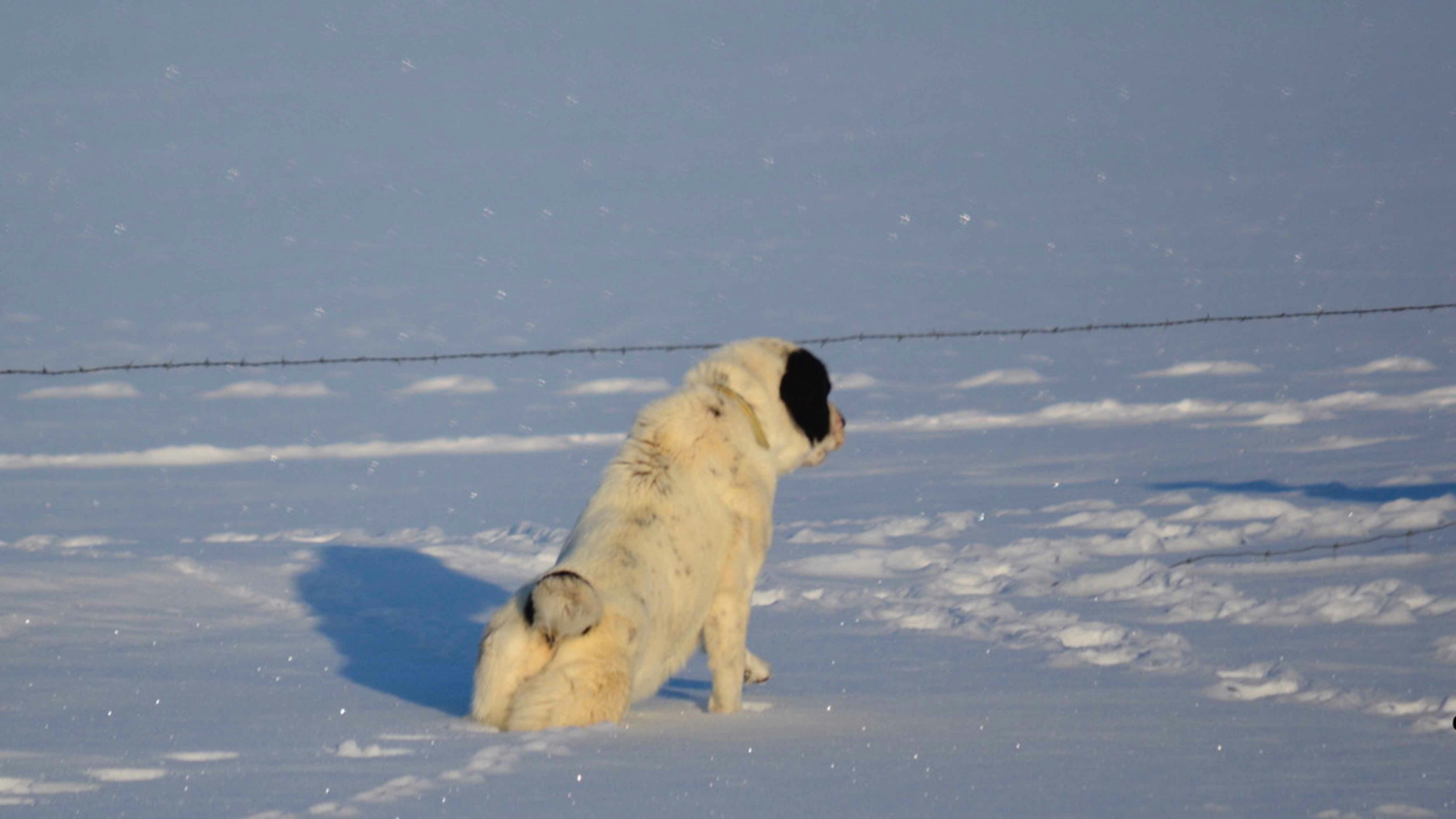As any good houndsman can attest, a dog will change its vocalization based on the species it encounters and pursues. It’s up to the dog’s human companion to decipher the information being communicated through those vocalizations.
My skills in this field have been tested the last few weeks, as Awbi, one of our livestock guardian dogs, reacts to wild predators as they move across the snow-covered landscape. Awbi’s tone and sounding pattern are different for small animals like foxes, amped up for coyotes, and delves into another realm for what we consider more dangerous predators.
Several red foxes spent the winter months using daybeds on the open sagebrush flat visible from our house. While the livestock guardian dogs have been able to see the small predators, the snow crust in this deep snow winter hasn’t been strong enough to hold the weight of a large dog, so the foxes have been able to go about their business untroubled by the dogs.
That changed a few weeks ago when a pair of foxes we’d been watching moved off the sagebrush flat and I assumed they had shifted to better hunting grounds elsewhere. As it turns out, that elsewhere is the rocky ridge directly above our house. According to Awbi, that was an unacceptable shift in fox activity. She switched from ignoring the foxes to actively harassing them.
The rocky ridge rising abruptly from the sagebrush flat would be a prime location for a fox den. Its rocks and brush would provide excellent hiding cover for a den excavated in the sandy soil, and an irrigation ditch near its base would provide water for pup rearing.
But the ridge overlooks our headquarters, with its variety of domestic animal inhabitants, including chickens that range around the yard during the day before being locked in their coop at night. A fat domestic hen would be a feast for a family of foxes, as would a newborn lamb, but our sheep flock will be moved to a distant area for lambing next month.
While I don’t consider the foxes much of a threat to our animals, this is Awbi’s area of expertise, and I defer to her judgment.
Early one cold morning last month I watched one of the foxes walk past our occupied dog kennel, knowing full well that the dogs were unable to give chase. The movements of a sly fox around our yard could result in its successful snatching of one of our small animals.
So when Awbi lit up and led the other guardian dogs into a chase into the rocks a few weeks ago, I wasn’t surprised to see the animal on the run was a red fox. While the dogs chased one fox across the ridge, another fox emerged to perch atop a boulder to watch.

The snow is still a problem for the dogs. While the fox could race across the top of the snowfield, the dogs would bust through the snow crust, floundering around in the deep snow until they could regain their footing.
After a few unsuccessful chases, surely the dogs would give up. Not Awbi. She pursued the foxes often enough that she began beating a packed trail through the snow, allowing her to gain ground in the chases.
As the days passed, Awbi’s barks would ring out as she set off in pursuit, and I watched at what looked to be a game between the quick foxes and the large dog. Every morning, every evening, the same chase would play out.
Eventually Awbi’s persistence revealed that the game had a purpose.
One recent evening I watched Awbi as she chased a fox across the ridge, pursuing the fox until it reached low saddle that connects with a lower ridge. Once the fox entered the saddle, Awbi stopped, the fox stopped, and the chase was over. The animals stood and looked at each other for a moment before Awbi turned to slowly traverse the way she had come, the fox sitting down to watch the big dog as she moved away.
It was at that point I realized that Awbi ’s persistence in chasing these foxes wasn’t simply a random, opportunistic act but a strategy to enforce a spacial separation between the wild predators and the animals she protects.
Awbi was chasing the foxes not just out of an area she defined as her territory, but into an adjacent area where the dogs would leave them alone. The chases were an act of defining territories for both the guardian dogs and their smaller wild relatives.

The next few days saw a repeated pattern, until the pair of foxes gave up their claim to the ridge above the house. They could move about on the lower ridge in the distance without interference from the dogs – this zone was “safe.” Awbi would bark in warning when the foxes approached the saddle, but the foxes stayed on their ridge.
It’s bound to be a successful strategy. There is a spot at the base of the lower ridge that has been used for fox dens the last few years. As we check irrigation water in the summer, we often spot the fox pups lounging around in the sand outside their dens. The guardian dogs know the locations of the dens, but do not disturb them.
By the time the sheep flock and their dogs return to the area in the fall, the fox pups will be grown and gone.
Cat Urbigkit is an author and rancher who lives on the range in Sublette County, Wyoming. Her column, Range Writing, appears weekly in Cowboy State Daily.





